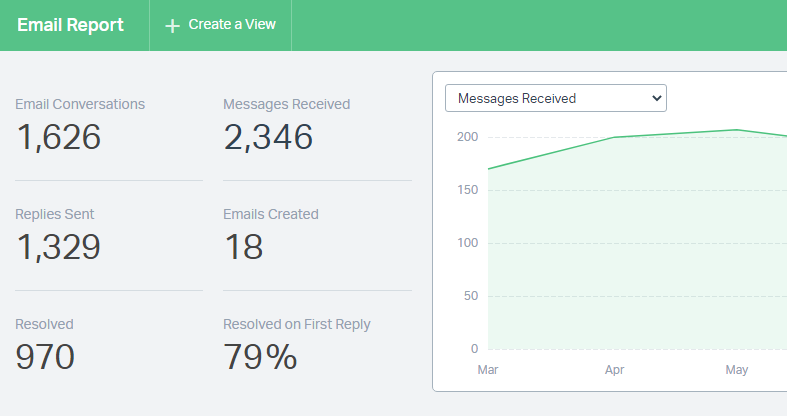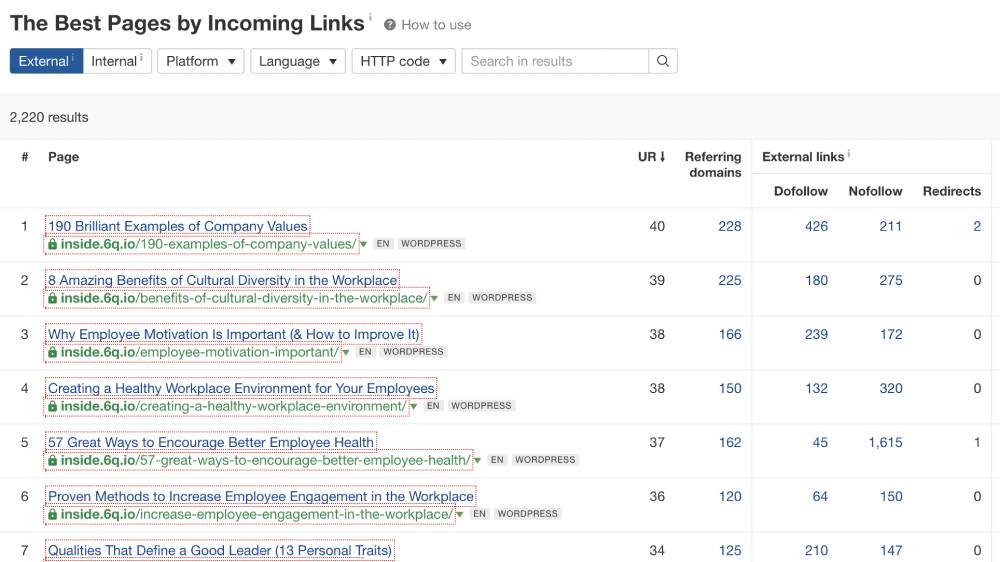If you have ever tried link building, you have likely attempted to get a few guest posts published. It sounds easy, right? You write a stack of great content and then simply pitch a guest post to a great blog. They will obviously say yes, because they appreciate the free content, in exchange for a link or two. Nope, publishers often don’t see it that way.
See it still takes work being the recipient of the guest post. Depending on what the site is, you may need to still have someone review all the post, create an illustration or find appropriate imagery, add internal links, optimise it for SEO, etc. Then there’s the seemingly 50% chance of receiving a terrible blog post which you can’t publish. That’s my experience being the recipient of thousands of guest post pitches.
When you pitch a guest post, you need to be always thinking of the recipient. They are likely overwhelmed with similar pitches, and as I just mentioned, they are often faced with absolutely terrible ones.
I should know. Every year, I receive thousands of guest post pitches for the 6Q blog. Some are great, most are terrible.

In fact, I started collecting examples of bad ones, and realised I could fill a novel sized book just on how not to do it. Rather than that, here’s a quick summary on how NOT to pitch a guest post.
How NOT to pitch a guest post
Here’s my top five pet hates when it comes to receiving guest post pitches. If you want to succeed when you pitch a guest post, don’t ever do these…
Have numerous spelling errors
It goes without saying. If you are unable to email me without spelling things badly, then you’re sure not going to be able to write a coherent, error free blog post, are you? Please spell check twice before you send off that pitch email. It is a surefire way to show the recipient you aren’t a good writer when you can’t even get a succinct email correct. Check out my free blogging tools post for a few tools that can help.
Pitch a topic they don’t cover
The 6Q blog is all about company culture, employee engagement, positive leadership. It’s obvious as soon as you start looking at the categories and the recent posts. That’s why I am always beyond annoyed when I get guest post pitches with crazy topics that don’t suit the blog. I had one a few weeks ago where they were pitching me titles about the importance of a business phone number(!).
When I wrote back and dot pointed what we do cover, they then declined. It could have saved both of us some time if they had done a cursory look at the blog first.
Be self obsessed
Sure, it is important that you have confidence especially when emailing stranger. However simply emailing me with “I need to post on your blog to build my SEO. Please publish quickly!” is a great way to get ignored. Yes, that’s a real quote from a recent email.
Instead of that, the recipient wants you to answer their WIIFM (What’s in it for me?). What will sending them a guest post achieve for the recipient or their website? You are better stating something like “SEO optimised to ensure it attracts new organic traffic for you” or something that explains the benefit.
Be too wordy
We are all busy. Emails can be a nuisance. I have keyboard shortcuts to reply to the amount of guest post pitches that I am dealing with. I don’t have time to read your novel. get to the point. Sure, offer to send more detail if they require it, but please don’t send more than a handful of paragraphs to begin with.
I regularly receive guest post pitches that include just about every guest post they have ever written as a long list of links. I don’t have time to peruse 50 articles. What I want to know is can you write for me or my website.
Follow up incessantly
I don’t need you to send me a ‘polite reminder’ six hours after first emailing me (believe me, that happens!). Give the recipient time to get to your email. If you are pitching guest posts to them, it is likely that many others are as well. There’s nothing worse than having someone being overly keen and coming across like a spammer.
It’s even worse when you are in a different timezone than I am, and you are sending follow ups when I am asleep. I haven’t even got to your original email if I haven’t replied, and it has been less than a few days.
So, a quick recap of the “never evers” of pitching guest posts;
- Have numerous spelling errors
- Pitch a topic we don’t cover
- Be self obsessed
- Be too wordy
- Follow up incessantly
So, now that we have covered what not to do, let’s take a look at better ways to pitch a guest post. Ensure that you make a great impression and increase the likelihood of being published.
3 methods to pitch a guest post
Typically, there are three different methods to pitch a guest post. They work to varying degrees, and like most digital marketing, the effort you put in increases the chances of a better outcome. I have used all three of these methods myself, as well as being on the receiving end.
The three guest post pitching methods are;
- Casting a wide net
- Focus on a small list
- All eggs in one basket
Now let’s go through each of those in more detail.
Casting a wide net
This is where you send a fairly generic email to many people, hoping that a few will reply. This works best if you keep the topic suggestions pretty generic, or you can even go so far as not mentioning topics, rather just ask if you can send a few over.
This is the amount of least effort, however typically is the least positive return. When you pitch a guest post this way, you are likely to sound generic. You run the risk of your recipients assuming that you are approaching many other websites at the same time.
Focus on a small list
Instead of emailing the top 100 blogs or websites in your chosen niche, why not take a deeper dive into 5-10 of them, and write a solid, well researched pitch instead? This is the sweet spot that I most often use when I pitch a guest post.
You can review their sites and look for any content gaps in what they have previously published. Then ensure you are personalising the names correctly, as well as providing topic suggestions they are likely to agree with. Especially if you mention you have looked through their site for similar writing.

Using Google is a great way to search a blog quickly. The above is an example of blog posts that Google has indexed on the Australian Software Guide. I can see that this site typically publishes software related content, so I would pitch articles that fit this overall theme.
This is where you use a few advanced queries on Google to help. For example, say I want to find if the topic of social media scheduling has been covered there before. I could use a term like the below to search.
"social media scheduling" site:www.softwareguide.com.au
Write the keywords or phrase in quotation marks, and then use the site: search operator to help you find the relevant content, or to confirm it has not been published previously.
All eggs in one basket
This method is as it states, you put all your energy and bets into just one publisher or website. You learn everything you can about them through researching, then you write the post and send it in, totally unsolicited. Does it work? Sure! Can it also be a waste of time? Also sure! It is a gamble, alright.
What I like about being on the receiving end of this, assuming the article is good, is that it just saves so much to and fro and time. I had one of these only last month, and the writer had gone to some amazing effort to ensure that it matched all the other posts on the 6Q blog.
However I have also had the opposite, where someone sends a post in, and the post is either terribly written or a topic I wouldn’t publish. I feel bad saying no, yet that’s the gamble in it all.
You should only write the post before pitching if you believe you have a very strong understanding of what content they publish, through your own research.
How to successfully pitch a guest post
So here are a few tips for that pre-qualify stage, and when writing your pitch email.
Do some pre-approach research
Before approaching the guest post publisher, you want to research a few things first, to set yourself up for better success. That is, you want to;
Ensure they publish guest posts
This is an easy one to achieve. You can browse through their website, however if there are no obvious ‘write for us’ menu items, then you may need to return to Google using a few operators, like above.
They publish topics you write about
This one is simple. Take a look at their feed, and see what the last ten posts were about. If they are publishing plenty of articles on engines and motors, maybe your article on butterflies will be completely off the mark?
You can match the post length and style
A good way to achieve this is by just browsing through their site. If you want to go to some more effort, you can use a free web page word counter to calculate what their average post length is, like in the example below.

As for their style, look for a style guide or editorial guide. If there isn’t one that you can easily find, then you can review a few posts to get a sense of their style.
You should look at things, such as;
- Language and tone
- Paragraph length
- Use of sub headings and captions
- Amount of in-content images per post
- Spelling of specific words or trademarks
- How they like to capitalise headings
If you can effectively emulate their style, then you are 95% towards getting published. Nobody wants to spend hours formatting a received guest post so it matches their site.
Look what previous posts rank well
This can be a little trickier without.a professional tool such as Ahrefs. What you want to do, is try and find what the most popular posts are on their website. You can just use the Google results from a search of the specific domain, using the phrase
site:www.thedomain.name
If you have access to Ahrefs, this is a far more detailed review. You can type in the target domain name, and use two different reports here, however I find the Best pages by links to be the better ranking for my needs.

The above example shows the top handful of blog posts for the 6Q blog. The first article, 190 Brilliant Examples of Company Values, has 228 other websites pointing at it. This is a sign of good popularity.
Now we get onto the final step of preparing to pitch a guest post, and that is, writing the actual guest post pitch email.
Write a winning pitch email
To write your pitch email, you want to ensure that you address it to the right person, and give them just enough to interest them in what you can offer.
Address the decision maker
The first point of that statement is important – wherever possible, find the persons name that you will be emailing. Don’t just send your email to contact@ blog-name with a ‘Dear Sir or Madam’ if you can avoid it.
Have a great subject line
I receive hundreds of emails that are titled ‘Guest post enquiry’. Yawn. You know what makes me notice? Subject lines such as ‘You haven’t published this topic before’ or ‘My guest post will attract new readers’. These are two real examples of emails I have received in the last few weeks.
Put the effort in, and think about your subject line. It is the first thing your recipient will notice. Perhaps try with an emoji or something if you like as well.
Keep your email succinct
As mentioned under what not to do, your recipient is likely busy. Keep your email as short as you can, so you value their time. A few paragraphs should be ample to get the key points across in an email.
Offer a short list of relevant topics
This one is super important. Don’t send 100 possible topics, and also don’t just send one topic. Do the research mentioned earlier, and write some persuasive article titles instead. Let’s say I want to pitch a story on stock photography. I am not just going to write ‘stock photography’ as a dot point, but rather a short list, like;
- 12 Surprising Ways to Sell Your Stock Photography
- Great Sites to Find Unusual Stock Photos
- How to License Your Stock Photos
If I want to send a few topics, I will write them in a similar vein, with actual article titles instead.
Offer credibility
Your recipient wants to know you can write and you have done so before. This is also not an opportunity to include 50 links to your other articles, but rather a statement along the lines of;
- I am a native English speaker, who has written over 100+ guest posts
- I have written for Forbes, Entrepreneur and the New York Times
- I have a large folio of posts I can share
If you write this, and then offer to send links to examples, that saves lots of precious words in your first email.
Add some personality
So many of the emails I receive sound like they were written by a robot, or are just a template from some software. Try to add a little humour or fun in your email. Don’t send a dirty joke, rather say something fun or take a risk with an image or a GIF, like the example I have sent out before.

This email actually received a great response, and many compliments, such as ‘The best pitch email I have ever seen’. It won me some precious links and a great side effect was that I made a bunch of people smile.
Example email
Here’s an email I write and have previously used, which I have used successfully a number of times. This is succinct, ticks the boxes and has some light personality.
Hi Sally
Yes, it’s YAGPP (Yet Another Guest Post Pitch). 😊
I’m an Australian marketer who is keen to write a guest post for XYZ Example.
I was looking at your Write for Us page, and through recent posts, and I feel these topics may fit best for you and your audience;
- Top 7 ways to improve your blog design
- How to build a Twitter audience in 10 minutes per day
- How stock photos can help your Instagram growth
If these don’t work, I am happy to suggest a few more? I’ve got 10+ years of blog writing experience, let me know if you’d like me to share some recent work with you.
I look forward to hearing from you.
Miles
In Summary
The more effort you put into research and writing that pitch to guest post on some target website, the more likely they will say yes. Be confident, approach them nicely and write great content.
Make sure to share and re-promote blog posts that do get published, as a way to get invited back again. Good luck in your guest posting adventures!








